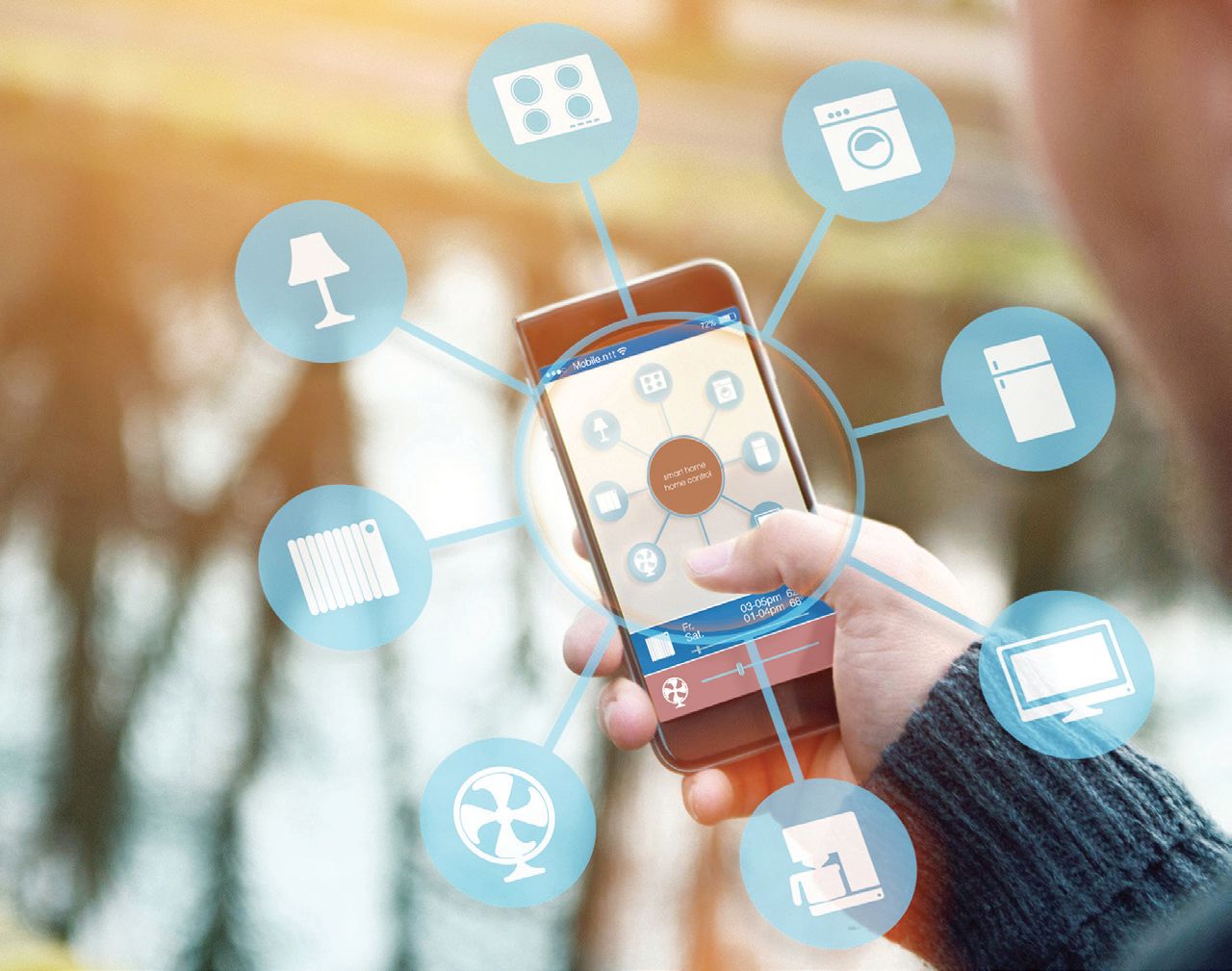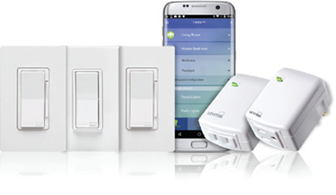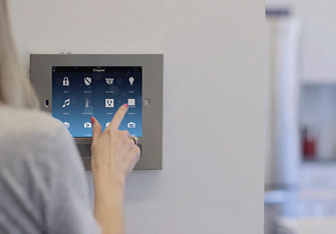Manufacturers of smart home technologies discuss some of the key products making headlines today, as well as why IMARK members are wise to familiarize themselves with this rapidly growing market.

While industry analysts agree that sales of many home automation products are still in their infancy stage and remain limited to the 10-15 percent of homeowners classified as “early adopters,” the market for home automation technology—which Business Insider defines as “any standalone object found in the home that’s connected to the internet, can be either monitored or controlled from a remote location and has a non-computing primary function”—is on the rise and will soon reach mass market levels. Specifically, global information provider The NPD Group reports that 2016 U.S. dollar sales of home automation products grew by 57 percent over 2015 levels, while Statistica forecasts that the current $4.9 billion market for these products will nearly double to $9.2 billion and touch nearly a third of all American households by 2021.
A Mass Market in the Making
Brian DiBella, president, Electrical Wiring Systems, Legrand North and Central America, supports these forecasts. “A 2016 study from the National Association of Home Builders documented strong demand for new home automation technology across all market segments and studies from national realty firms have produced similar findings,” DiBella said. “Millennials expect it because technology already plays an important role in their lives, while older and more affluent buyers appreciate the added security, convenience and value it delivers. The products are highly cost-effective to install in new construction and, more importantly, they’re in demand among today’s homebuyers who increasingly expect smart technology to be offered as either standard or optional features,” he said, noting that adoption rates are being further fueled by the increasing popularity of intelligent voice-activated systems like Amazon Echo and Google Home.
Greg Rhoades, director of marketing at Leviton, said that his company is also seeing steadily growing adoption of smart home devices. “What the smart phone did 10 years ago for high-end home automation, voice control is doing today for mass-market adoption,” Rhoades confirmed. “Whether it’s Apple’s Siri, Amazon’s Echo or Google’s Home, all provide a familiar and affordable way to interface with your home. We all yell at our appliances and electronics anyway, but now they’re actually starting to obey our wishes.”
According to Rhoades, the buyers demanding these products are more diverse than one might think. “You’d imagine that millennials would be the ones who are all over home automation since they were born into the age of the internet and smart devices,” he shared, “but Gen Xers are the key demographic for these products today, with baby boomers a close second, especially for vacation homes. People were afraid of and confused by previous terms and solutions, but everyone understands Wi-Fi today and enhanced marketing efforts by providers, installers and manufacturers is helping to broaden the consumer base as well.” While declining price points for these products combined with increased consumer comfort with them are helping to boost the market, “lots of builders are also riding the marketing wave by promoting their homes as ‘smart,’ and are ultimately offering end-users some massive benefits on this technology,” he said.
Marquee Products
Including products that help automate and centralize control of lighting, HVAC systems, home entertainment, doorbells, locks, window treatments and other residential systems, the following are examples of some of the most popular products our experts are selling into the growing smart home market.
“Legrand’s high-definition internet protocol (IP) cameras for indoor and outdoor use offer homeowners peace of mind whether they’re in the house or on the go by delivering quality imaging and remote accessibility, shared DiBella of Legrand’s system, which provides homeowners with real-time views of people in the yard, at the door or inside the home. “Our video door entry cameras have two-way audio, letting residents remotely hear and speak to a visitor using a computer, tablet or smart phone, while our latest high-definition bullet cameras, designed for outdoor use, provide round-the-clock security day and night.”
Leviton's Decora Smart Z-Wave+
 According to Leviton Director of Business Development Ian Hendler, “Leviton’s Decora Smart Z-Wave+ edition can easily integrate with almost every professionally-installed security system from the last decade, enabling new, connected Z-Wave+ lighting control with most existing or new residential or light commercial alarm systems that integrate secure remote access and advanced energy management.” Delivering enhanced comfort, convenience and safety, he said, “our Decora Smart Z-Wave+ family of products leverages virtually any supported security system’s Z-Wave+ scheduling abilities and advanced geo-fencing capabilities that can aggregate location, remote access, Global Positioning System (GPS)-automated security and IP camera control,” he added, noting that Leviton’s Decora Smart HomeKit edition is now available for use with Apple’s HomeKit protocol.
According to Leviton Director of Business Development Ian Hendler, “Leviton’s Decora Smart Z-Wave+ edition can easily integrate with almost every professionally-installed security system from the last decade, enabling new, connected Z-Wave+ lighting control with most existing or new residential or light commercial alarm systems that integrate secure remote access and advanced energy management.” Delivering enhanced comfort, convenience and safety, he said, “our Decora Smart Z-Wave+ family of products leverages virtually any supported security system’s Z-Wave+ scheduling abilities and advanced geo-fencing capabilities that can aggregate location, remote access, Global Positioning System (GPS)-automated security and IP camera control,” he added, noting that Leviton’s Decora Smart HomeKit edition is now available for use with Apple’s HomeKit protocol.
DiBella said that Legrand’s portfolio of residential lighting controls includes dimmers, timers and occupancy sensors that can reduce energy use by up to 30 percent.
Legrand Intulty Home Screen

“While single devices go a long way toward reducing energy consumption, integrating them with the Legrand Intuity Home Automation system enables them to communicate with each other, delivering the greatest benefit by maximizing both efficiency and convenience,” he said, adding that a recent Consumer Technology Association study revealed that the use of devices as part of a wholehome automation system can reduce energy consumption by up to an additional 10 percent.
Legrand’s portfolio also includes automatic window shading systems to maximize energy efficiency, optimizing the use of natural lighting to control indoor temperatures. At Leviton, “all Decora Smart products enable scheduling, sensoring and even location-based (GPS) energy management options and our Z-Wave+, Zigbee and Wi-Fi families of products are now all supported by the Samsung Smart Things hub,” Hendler explained. “Although timebased scheduling or astronomical clock functions (sunrise/sunset) are typically used to control lighting and small appliances for energy management applications, GPS-based control of devices (known as geofencing) is the most exciting way to completely automate and enhance energy savings, with lighting and small appliances powered up or down automatically based on a user’s location.”
With no separate wiring bus to handle command signals or monitor status, implementation of lighting controls in existing homes was a challenge years ago, according to DiBella. Today, beyond the lighting controls already cited, “Legrand’s Radio Frequency Lighting Control (RFLC) system utilizes wireless radio signals to allow light switches to be automated and controlled remotely. The RFLC light switches and dimmers can be combined with occupancy and light sensors, further increasing efficiency, and our True Universal Dimmer is guaranteed to work, out of the box, with any light source,” he said.
Leviton’s Decora Smart and Samsung Smart Things package delivers remote access and scene-based support for universal lighting control that encompasses single-pole, three-way, incandescent, compact fluorescent lamp or LED lighting applications. “Plug-in modules are also available to support free-standing lighting applications such as floor and table lamps or even small appliances, and Leviton Decora Smart can enable modular, scalable lighting control for individual lights, lamps or entire fixtures with Leviton’s supported specifications of up to 1,000 watts or 15-amp relay capabilities,” Hendler said.
“Entertainment is a critical component of any modern home and demand for wireless access to digital music an streaming services throughout the home has increased,” DiBella shared. “At the same time, high-definition media demands a reliable home network, whether wired or wireless, since it’s the essential pathway for control and content”—a degree of network reliability that he said Legrand provides thanks to its newly-acquired line of Luxul routers. “For a truly custom experience, our Nuvo Player Portfolio is a simple yet comprehensive system for whole home audio, allowing listeners to play different content in different rooms and spaces at different volume levels,” he said. “Every zone can have its own selection or be synchronized with access to content from personal devices.”
In addition to Samsung Smart Things’ integrated support for entertainment and lighting scenes, Hendler said that Leviton Decora Smart Z-Wave+ products work with many of the leading home control and entertainment hubs that now support Z-Wave-certified lighting control. “For example, Control4, Universal Remote Control and Remote Technologies Inc. all have audio/visual (AV) remote control platforms that can integrate support for Leviton Decora Smart Z-Wave+ products for AV, home theater and whole-house applications,” he said. “Supported entertainment applications typically include lighting scenes and automation for dining, socializing/ entertaining, watching movies and clean-up modes.”
Getting in the Game

The following are some tips to help IMARK members and their contractor customers maximize their participation in the growing market for smart home products:
- Start slowly. “Before embarking on a smart home adventure, evaluate what you’re trying to accomplish. There are lots of options out there and you want to choose something that’s going to have a long lifetime of support and ongoing development,” Leviton’s Rhoades said. “Don’t worry about doing all of it at once, as most solutions today are modular and easy to add or adjust at any time once installed. Many customers begin by automating their front porch and/or driveway lights, which has an immediate impact on safety and represents an easy-to-experience entrée into the world of home automation.”
- Build on strength. Legrand’s DiBella said that the process is most successful when it starts with technology that contractors already have expertise in (lighting, for example) and adds the feature of connectivity via Wi-Fi to enable remote control, easy programming and integration with home automation systems. “The RFLC starter kit is the perfect way for Legrand channel partners to introduce the concept of smart, appbased devices to their contractors as a potential revenue stream and the RFLC controller is a simple first step toward a more comprehensive smart home system,” DiBella said.
- Understand today’s tech landscape. “If you want to create a comprehensive smart home, Z-Waveis still where it’s at,” Rhoades said, noting that Leviton’s Samsung SmartThings hub is low-cost and encompasses products from many manufacturers, allowing for the creation of a complete home automation solution with cameras, locks, thermostats and lighting controls. “If you don’t already have (or aren’t selling) a smart security system or smart hub, consider going hubless, as Amazon Echo, Google Home or Apple TV can act as a smart home hub,” he said. “In addition, controlling your house with voice is the new fun thing.”
- Get educated. Rhoades suggests that distributors and contractors avail themselves of the great information made available by manufacturers via online tutorials, in-person instruction or YouTube demonstrations. “And be sure to ask questions,” he added. “This is a fast-moving industry, but manufacturer support teams are here to help.”
- Choose wisely. “Go with a company that stands behind its products, because you don’t want to suddenly have a non-supported smart home,” Rhoades advised. In addition, echoed Leviton’s Hendler, “while home and commercial automation products are more accessible than ever, detailed knowledge about these products and their capabilities is still quite low among end-users, so consultation with and installation by a professional can add considerable value for the home or business owner while boosting opportunities for channel members.”
- Embrace the market. “The home technology leaps we’ve introduced offer channel partners the opportunity to differentiate themselves as they continue to expand their offerings and capitalize on the growing demand for smart homes,” DiBella concluded. “And with millennials entering their home-buying years, these demands will only increase.”